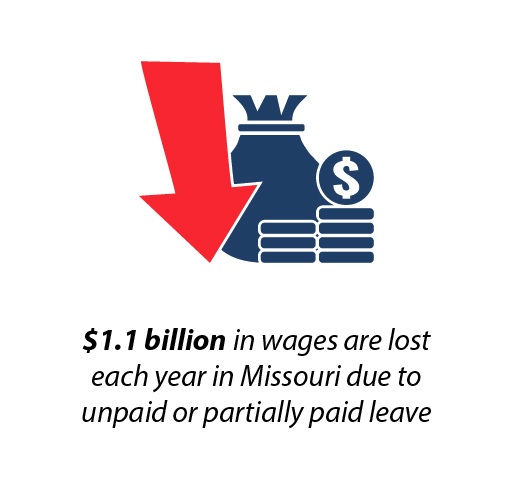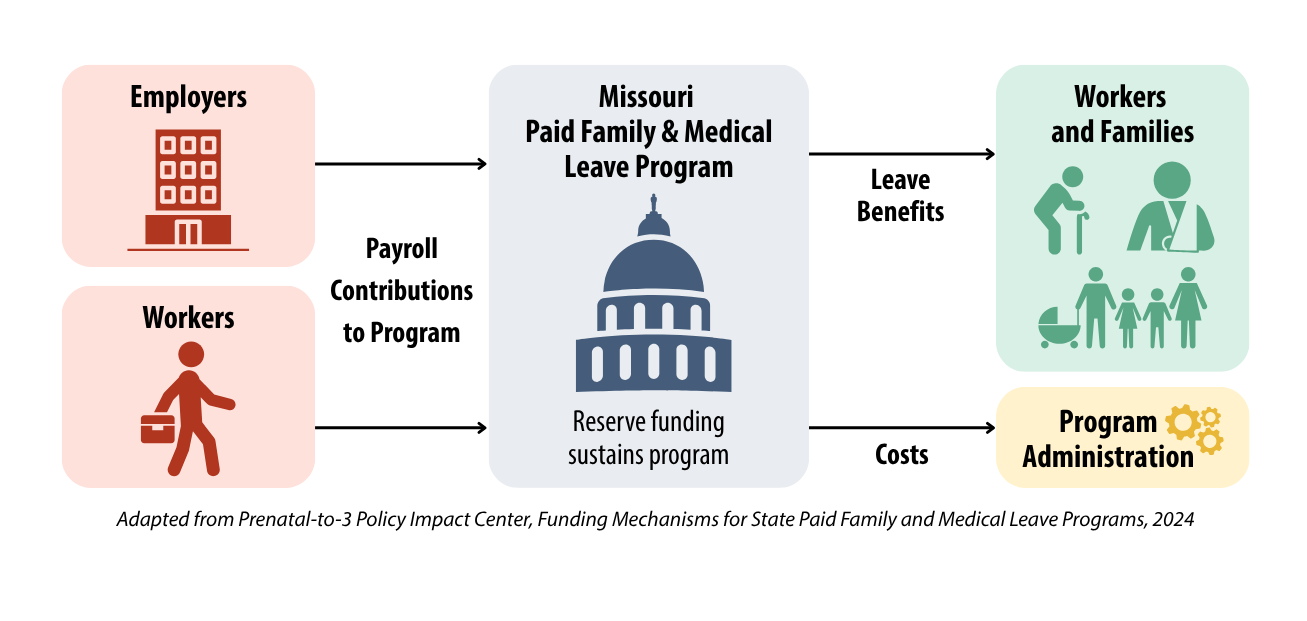
The Family Medical Leave Act (FMLA) of 1993 was a critical step forward in supporting families. FMLA provides job protections for millions of workers who need to take time off to bond with a child, care for an aging parent or recover from a serious illness.
However, because FMLA only guarantees unpaid time off, it is only truly accessible to those who can afford to forgo their paychecks. This means that many Missourians must continue working, leaving them unable to fully recover from childbirth or serious illnesses such as cancer. Others struggle to make ends meet without a paycheck or are forced out of the workforce entirely. This has devastating costs for Missourians and their families, as well as the economy. Missouri workers miss out on $1.1 billion in wages each year due to unpaid leave.
Missourians Need a Common Sense, State Paid Leave Program
The United States is the only industrialized nation that does not provide guaranteed paid family leave and one of only two that does not provide paid medical leave. Thirteen other states and the District of Columbia have implemented Paid Family and Medical Leave (PFML) so workers who take time off to recover from (or to care for a loved one with) a serious medical condition can still receive income.
Paid family and medical leave benefits provide:
- A specified duration of leave. State programs offer a certain number of weeks of paid family and medical leave that varies depending on category of leave.
- Wage replacement. While on leave, workers receive either full or partial replacement of wages. This may be a fixed share or may vary depending on income. Most states also include a maximum weekly benefit that is based on the state average weekly wage (SAWW).
- Job protection benefits. Job protection benefits require that a worker is placed in the same position, or a comparable position, when the worker returns from leave. While FMLA provides unpaid, job protected leave for some workers, PFML provides additional protection to workers covered by paid leave laws.
Paid family and medical leave is good for children & families
Paid family and medical leave improves the health and well-being of parents and children:
- Decreases postpartum anxiety and depression, reduced parental alcohol use, and improves the overall health and emotional well-being of parents.
- Increases on-time vaccinations, breastfeeding and reduces childhood obesity, asthma, and ADHD.
- Reduces infant mortality, hospitalizations, and child abuse and neglect.
Paid family and medical leave improves the economic security of families by increasing household income and reducing poverty and food insecurity. This is critically important for Black and Latino/Latina children and families that traditionally have much lower access to paid leave; in fact, 1 in 3 Black workers and over 40% of Latino/Latina workers have no access to PFML as compared to only 1 in 4 white workers.
Paid family and medical leave is good for business & the economy
Paid family and medical leave reduces employee turnover and increases labor force participation leading to significant cost savings for employers. The cost of rehiring and training replacements is estimated to cost 21% of a lost employee’s annual salary.
Paid family leave increases worker productivity by attracting a high quality workforce and reducing absenteeism and tardiness among workers, thereby increasing overall productivity.
How is PFML paid for?
PFML programs are typically funded through payroll contributions from workers, employers, or a combination of both. This deduction is less than 1% of payroll in most states.

Paid Leave Spotlight: Minnesota Model
Weeks of Leave: 12 medical, 12 family (20 combined)
Payroll Deduction: 0.7% (0.4% medical + 0.3% family)
Who pays the premium: Employee 50%, Employer 50%
Maximum weekly benefit: $1,481.76

